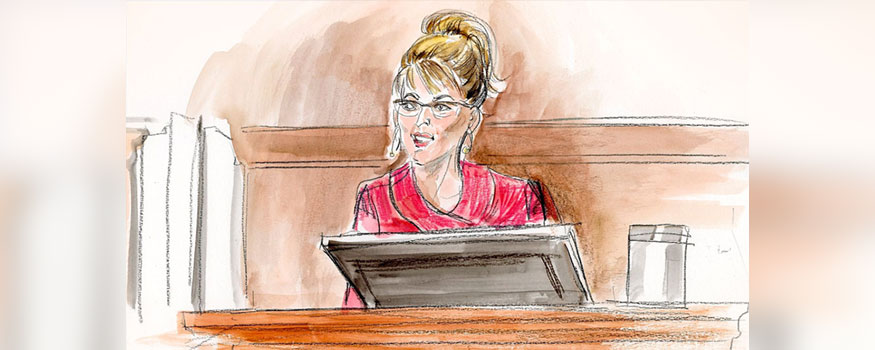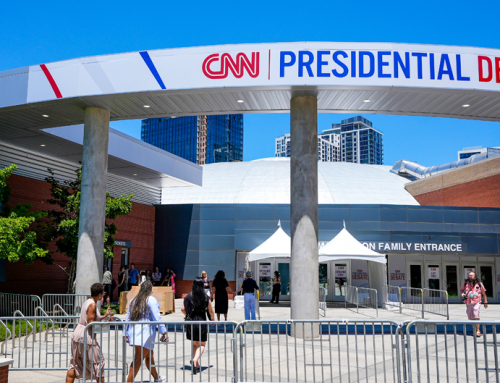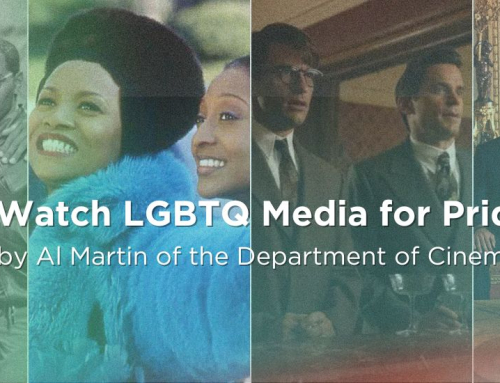By Barbara Gutierrez
Two University of Miami legal experts give their interpretation of the jury verdict and court’s decision in the recent lawsuit involving the former governor of Alaska and the daily newspaper.
A New York jury decided on Feb. 15 against former Alaska Governor Sarah Palin in a libel suit she filed against The New York Times where she claimed that the newspaper had published a defamatory statement that had damaged her reputation.
In an unusual move, U.S. District Court Judge Jed Rakoff announced to the parties prior to the end of the jury’s deliberations that he would dismiss the case because of the plaintiff’s failure to have met the required legal standard—even if the jury returned a verdict in Palin’s favor.
“The Palin case should be dismissed,” said Samuel Terilli, associate professor in the University of Miami School of Communication and former legal counsel to the Miami Herald. “To win her defamation suit, Palin, as a public person, had to prove convincingly that the Times published information that the Times knew was false—knowingly lied in other words—or that the Times recklessly and utterly did not care whether the editorial was true or false.”
The case stemmed from a 2017 editorial published by The New York Times that erroneously linked a map that Palin’s political action committee had posted to the 2011 shooting that injured Congresswoman Gabrielle Giffords.
At the time, Palin said she was “mortified” that the newspaper had accused her of urging the shooting, which took the lives of six people.
Terilli said that the editorial was a case of sloppy editing.
“He [the editor] should have edited the column differently to avoid any suggestion of a more direct connection between Palin’s political advertising and any actual shooting, but it was a mistake and not what’s called ‘actual malice’ under the law of defamation,” said Terilli.
Journalists have a fair amount of freedom when covering public figures, such as Palin, who also was the vice-presidential running mate for the late John McCain, the former Arizona senator who ran for president in 2008.
The 1964 Supreme Court case of New York Times Co. v. Sullivan established the principle that the First Amendment ensures that to establish actual malice, no public official could win damages for libel without proving that the statement was made “with knowledge that it was false or with reckless disregard of whether it was false or not.” Subsequent cases expanded Sullivan’s actual malice requirement to public figures.
The judge’s decision to throw out the Palin case seemed unusual to some, but it is within his purview, legal scholars noted.
“Even if a judge decides that a case should ultimately be dismissed, it makes sense to wait for the jury to hand down its verdict, so that there doesn’t have to be a retrial in case the judge’s dismissal is overturned on appeal,” said Lili Levi, professor of law and Dean’s Distinguished Scholar at the School of Law.
“Even though Judge Rakoff announced his view to the parties before the end of jury deliberations, that announcement was not made to the jury,” she said. “While several jurors said that they had received push notifications of his announcement on their smartphones prior to their verdict, they assured the court that this information had not played any role in their deliberations.”
When the judge threw out the Palin case, he said he did so because “this is the kind of case that will inevitably go up on appeal,” Levi added. This has led some legal scholars to speculate that courts, and ultimately the Supreme Court, would revisit the New York Times Co. v. Sullivan case.
“Many think there are at least two, possibly three, sitting Supreme Court justices with questions about the 1964 decision in New York Times Co. v. Sullivan—the decision that announced the actual malice rule,” said Terilli. “I don’t expect it to be overruled. It’s been nearly 60 years and it is settled, logical, and well-founded law.”
Levi agrees that a reversal of New York Times Co. v. Sullivan is not probable. “While I think a reversal of New York Times Co. v. Sullivan by the Supreme Court is unlikely, the application of the actual malice standard could be significantly limited in practice,” she said. “Whether through changes in judicial interpretations of what should be deemed reckless disregard, or through changes defining public figures, or through the chilling effect of strategic ideological attacks on press editorial judgments by plaintiffs seeking hundreds of millions in damages, the press will continue to face sustained legal attack despite this ‘win’ in Palin v. New York Times.”
“The press needs to hear well the implicit lesson of Palin v. New York Times. The paper may have won this round, but it took two weeks of testimony and involved three days of jury deliberation to get there,” Levi said. “More such cases will come.”
This article originally appeared at https://news.miami.edu/stories/2022/02/sarah-palin-v.-new-york-times-case-highlights-first-amendment-rights-for-journalists.html.






